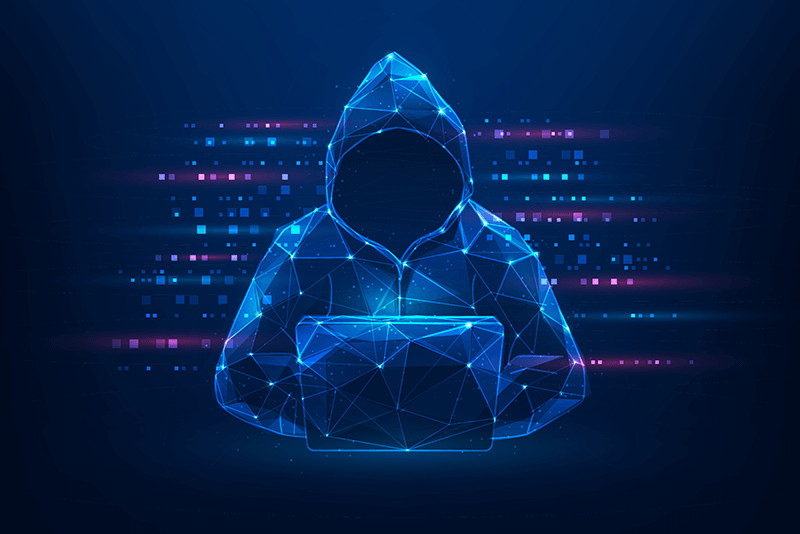
Imposter scam messages are tricky cyberattacks that exploit individuals by pretending to be from a trusted source. These scams are especially dangerous as they can come in a variety of different formats like emails, text messages, or even phone calls. This mixed with the various people or organizations scammers can pose as makes these scam messages difficult to spot and avoid. Continue reading to learn about the most common imposter scams and steps you can take to defend against them.
Identifying Imposter Scams
Imposter scam messages can come in many different forms, but they typically include some key characteristics. As the name suggests, these messages will often seem to come from someone you know or someone from an organization you trust. Some of the most common scams are listed below:
- Fake Government Officials: Scammers impersonate government agencies like the IRS, claiming you owe taxes that could lead to legal action if not paid soon. These scams also include election frauds where cybercriminals pretend to be a candidate asking for donations.
- Tech Support Impersonation: Impersonators pretend to be tech support agents, warning of computer viruses and demanding access to your device in order to help.
- Romance Scams: Cybercriminals create fake online personas to establish relationships and request money for various reasons.
- Utility Company Scams: Scammers pretend to be representatives threatening service disconnection if you don’t make an immediate payment.
- Solicitation from Charities: Imposters claim to be from charitable organizations and ask for donations that never reach the intended cause.
These scams will ask for money or information, claiming it is needed for an urgent matter. Scammers will try to make you afraid of what will happen if you don’t give them what they want, tricking you into acting quickly before you realize their message isn’t legitimate. Furthermore, imposter scam messages will ask for money in a non-conventional way like through gift cards, wire transfers, or even cryptocurrency. This is a big red flag that the message your received is a scam.
How to Protect Your Business
Imposter scams can wreak havoc on you and your business, draining your finances or exposing sensitive information if not stopped. Never fear, there are various ways you can check to see if an imposter scam message is legitimate or not and save your business from potential cyberthreats.
Verify the Identity
Imposter scam messages will always pretend to be from someone you know or an organization you trust. If you receive a message asking for money or personal information, do not give it out. Instead, reach out to the person sending the message using another medium. For example, if you get an email from a friend in trouble, try calling or texting them to verify if they really need help. If an organization like IRS sends a message demanding a response, go to their official website and reach out using their listed contact information. Always confirm someone’s identity through another trusted contact method not listed in the suspicious message.
Question Urgency
These imposter scam messages will rely on your emotions getting the better of you. Scammers will create a sense of urgency or fear to try and pressure you into taking immediate action. Never give away money or provide your private information without evaluating the situation. Take a breath and slow down to consider if this person or organization would really ask for your money in this way. Then reach out to verify and stop yourself from making a rash decision.
Do Not Share Personal Information
Never share personal or financial information in unsolicited calls or emails. If an organization asks for money this way, it’s likely an imposter scam message. Government agencies, tech support, charities, and most all other organizations will not ask for money or information like this because these methods are not secure.
Enable Multi-factor Authentication
Multi-factor Authentication (MFA) won’t just help you protect your business from imposter scams, it will help you guard against all kinds of cyberattacks. MFA adds an extra layer of security to all of your accounts, requiring another form of verification before someone can log into your account. This will mainly help protect any information stolen in an imposter scam message. If a scammer tricks you into revealing your password to an account, they still won’t be able to access it since you are the only one who will get the verification message.
Enroll in Cybersecurity Training
Protecting your business from imposter scam messages and any other cyberthreat requires constant vigilance. It also means you and the rest of your team need to be aware of all the latest scams and how to respond to them. This is where cybersecurity training can be a great asset. Training programs run by IT professionals like the ones at Strategy Tech Services educate continuously educate your business on how to recognize cyberthreats and the best practices available to defend against them.
Keep Your Business Safe with Strategy Tech Services
Imposter scam messages can be a frightening experience, pressuring you into revealing your financial or personal information to scammers posing as trusted sources. The good news is that you don’t have to face these cyberthreats alone. Not only is our team of IT experts here to help defend your business from cyberattacks, but we also offer free e-course on the steps you can take to keep your data safe. Sign up for our cybersecurity e-course and learn more about how you can protect your business from scammers.


